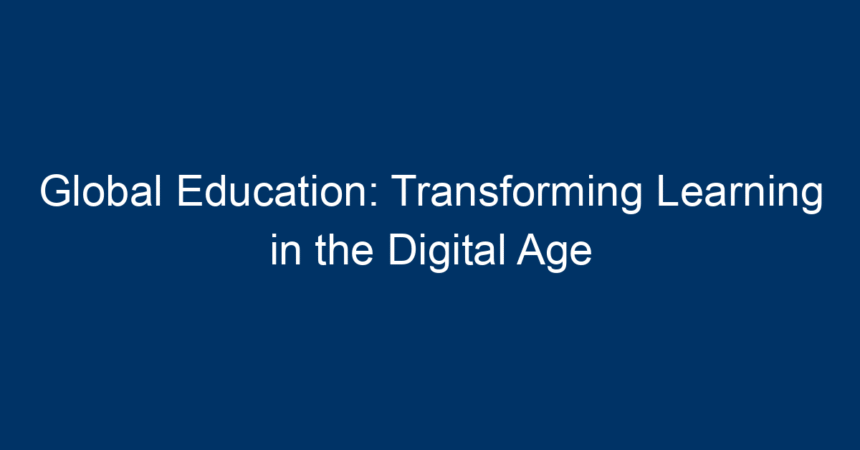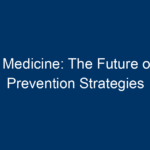In an increasingly interconnected world, the concept of global education has emerged as a crucial pillar for fostering understanding, innovation, and collaboration across borders. The digital age has revolutionized how we access and share knowledge, breaking down geographical barriers and creating unprecedented opportunities for learners everywhere. This article delves into the transformative power of global education, exploring its benefits, challenges, and the technological advancements that are reshaping the learning landscape.
Understanding Global Education
Global education is more than just the exchange of knowledge across countries; it encompasses a comprehensive approach to learning that prepares students to thrive in a diverse, rapidly changing world. It emphasizes critical thinking, cultural awareness, and the development of global citizenship—skills essential for engaging in the complexities of today’s society.
The Importance of Global Education
-
Cultural Awareness: In our diverse world, understanding different cultures fosters empathy and resilience. Global education promotes the appreciation of diverse perspectives, essential for collaboration in both personal and professional spheres.
-
Skill Development: As the job market evolves, employers seek individuals with skills that transcend geographic boundaries. Global education equips students with the adaptability and problem-solving skills necessary to navigate multicultural environments.
- Social Responsibility: By teaching learners about global issues such as climate change, poverty, and inequality, global education encourages civic engagement. Students learn to think beyond their immediate surroundings and become proactive global citizens.
The Role of Technology in Global Education
Digital Learning Platforms
The rise of technology has fundamentally altered how education is delivered. Online platforms such as Coursera, edX, and Khan Academy provide access to high-quality educational resources from leading institutions. These platforms democratize learning, enabling individuals from all backgrounds to engage with content that might have previously been inaccessible.
-
Accessibility: Digital platforms break down barriers to education, allowing learners from various socio-economic backgrounds to access educational materials at little to no cost.
- Personalized Learning: Adaptive learning technologies enable customized educational experiences, accommodating individual learning styles and paces. This personalization enhances student engagement and retention.
Virtual Classrooms
Virtual classrooms have become a cornerstone of global education, fostering collaboration among students across the globe. Tools like Zoom, Microsoft Teams, and Google Classroom enable real-time interaction between educators and learners.
-
Collaborative Learning: Global classrooms provide opportunities for students to work on group projects with peers from different cultures, fostering teamwork and enhancing intercultural competence.
- Expert Access: Virtual classrooms can connect students with industry experts, researchers, and educators worldwide. This exposure enriches the learning experience and provides insights into various fields.
MOOCs: A Game Changer
Massive Open Online Courses (MOOCs) are transforming the landscape of global education by expanding access to high-quality learning experiences. These free or affordable courses allow participants from all over the world to engage with leading academics and professionals.
-
Diverse Offerings: MOOCs span a wide range of topics, enabling learners to explore new interests or deepen their expertise in a particular subject.
- Global Networks: Enrolling in MOOCs often connects learners with a diverse peer community, facilitating knowledge exchange and lasting relationships across borders.
Challenges Facing Global Education
Despite the benefits, global education is not without its challenges. Addressing these issues is crucial for maximizing its potential.
Digital Divide
The digital divide—the gap between those with access to technology and those without—poses a significant barrier to effective global education. While technology is a powerful tool, students in underserved regions may lack reliable internet access and devices, limiting their ability to participate in digital learning opportunities.
Cultural Barriers
Cultural differences can sometimes hinder effective communication and collaboration in global educational settings. Misunderstandings arising from language barriers or differing cultural norms may impede group dynamics and learning outcomes.
Quality Assurance
With the proliferation of online courses and programs, ensuring the quality of educational content has become increasingly complex. It’s essential for learners to choose reputable institutions and verify the credibility of online courses to avoid misinformation and subpar educational experiences.
The Future of Global Education
As we look toward the future, several trends are poised to shape the evolution of global education.
Increased Collaboration
Collaboration between educational institutions, governments, and private sectors will be vital in developing innovative solutions to global education challenges. Partnerships can foster resource-sharing and create enriched learning environments that benefit students worldwide.
Continuous Lifelong Learning
In a world where information and skills need to be constantly updated, the emphasis on lifelong learning is set to grow. Global education will play a critical role in supporting individuals in acquiring new skills and knowledge throughout their lives, promoting adaptability in a rapidly changing job market.
Emphasis on Soft Skills
The demand for soft skills—such as communication, teamwork, and emotional intelligence—will continue to rise. Global education will focus more on cultivating these skills, ensuring that learners are well-prepared to navigate the complexities of the modern world.
Actionable Insights for Embracing Global Education
-
Leverage Online Resources: Explore platforms like Coursera and edX to find courses that interest you or enhance your career prospects. Participate in MOOCs to broaden your knowledge and network.
-
Engage with Diverse Communities: Join online forums, social media groups, or local cultural organizations that celebrate diversity. Engaging with various communities will enrich your understanding and appreciation of different cultures.
-
Support Local Initiatives: Advocate for initiatives that promote technology access in your community. Support organizations that work towards closing the digital divide and enhancing educational opportunities for underserved populations.
-
Promote Inclusivity: Whether you are an educator or a learner, foster inclusivity in educational settings. Prioritize communication and collaboration strategies that respect and celebrate cultural differences.
- Commit to Lifelong Learning: Cultivate a mindset of continuous learning. Stay curious and open to new ideas, whether through formal education or informal exploration of new topics and experiences.
Conclusion
Global education is transforming how we learn in the digital age, breaking down barriers and creating opportunities for collaborative engagement. By embracing technology, fostering cultural awareness, and developing the skills needed for the future, we can equip ourselves and future generations to thrive in an increasingly interconnected world. Let us commit to nurturing this transformative power of global education, ensuring a more equitable and informed global community.




